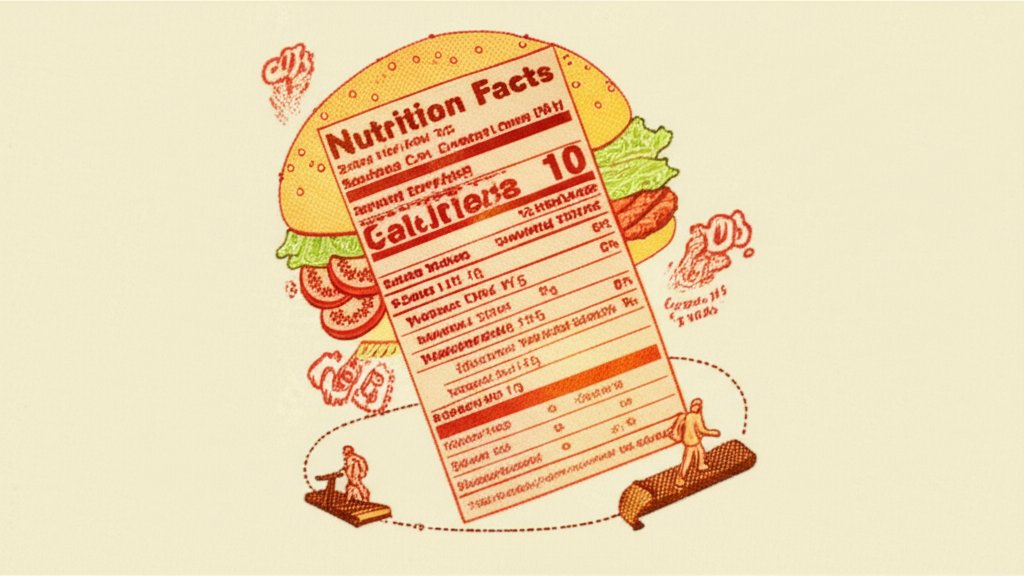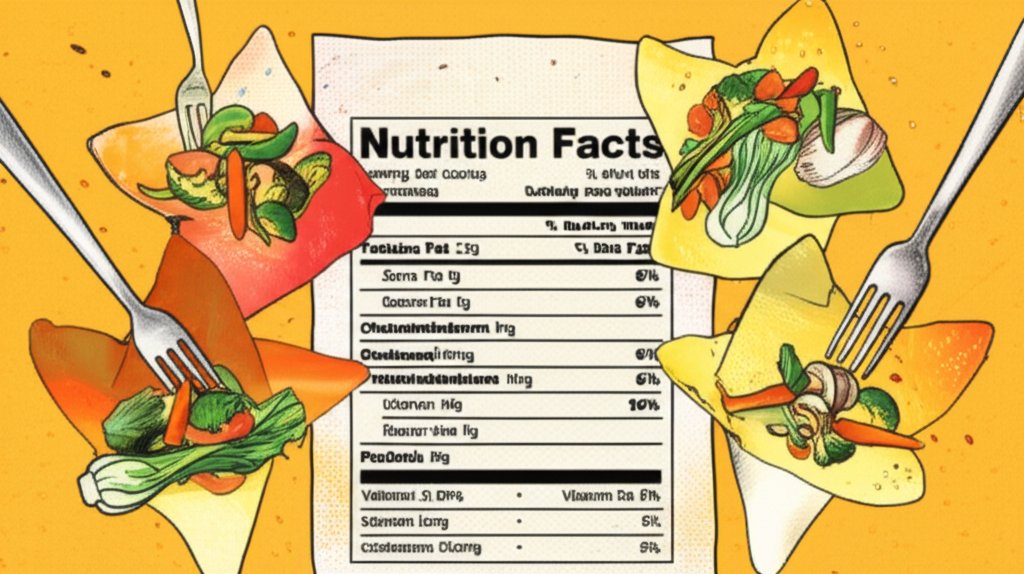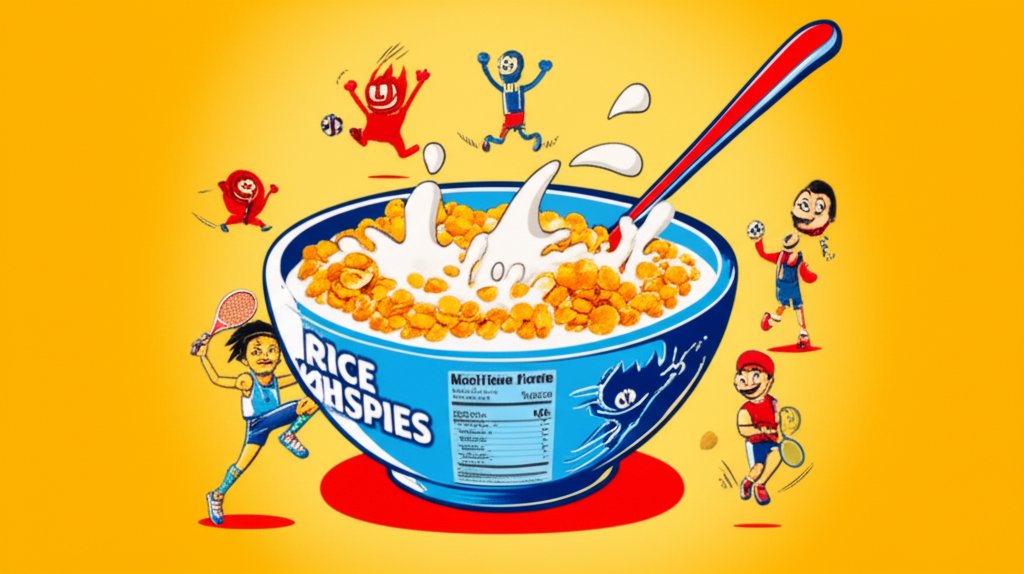Ever wonder exactly what you’re getting when you pour yourself a bowl of Rice Krispies? We’re breaking down the nutrition facts of Rice Krispies, so you can make informed choices about your breakfast (or snack!). From calories and carbs to vitamins and minerals, we’ll cover everything you need to know.
At a glance:
- A single serving (1 cup or 28g) contains roughly 110 calories.
- They are very low in fat and cholesterol-free.
- Rice Krispies are a good source of iron and certain B vitamins due to fortification.
- They contain a moderate amount of carbohydrates and sugars.
- Consider portion size and added ingredients (like milk and sugar) for a complete nutritional picture.
Decoding the Cereal Aisle: Why Nutrition Facts Matter
Navigating the cereal aisle can feel overwhelming. Packages boast about “healthy” ingredients, but understanding the actual nutrition facts empowers you to choose wisely. Knowing what’s in your food is key to maintaining a balanced diet and achieving your health goals. So, let’s dive into the details of Rice Krispies.
Rice Krispies: Nutrition Facts Breakdown
Here’s a detailed look at the nutritional profile of a standard serving (1 cup, or 28 grams) of Rice Krispies:
- Calories: Approximately 110
- Total Fat: 0 grams
- Saturated Fat: 0 grams
- Trans Fat: 0 grams
- Cholesterol: 0 milligrams
- Sodium: 140 milligrams (6% Daily Value)
- Total Carbohydrate: 25 grams (9% Daily Value)
- Dietary Fiber: 0 grams (0% Daily Value)
- Total Sugars: 3 grams (6% Daily Value)
- Protein: 2 grams (4% Daily Value)
- Vitamin D: 1 mcg (5% Daily Value)
- Iron: 3.5 milligrams (19% Daily Value)
- Potassium: 30 milligrams (1% Daily Value)
- Calcium: 0 mg (0% Daily Value)
- Vitamin C: 0 mg (0% Daily Value)
The % Daily Value (DV) tells you how much a nutrient in a serving of food contributes to a daily diet. 2,000 calories a day is used for general nutrition advice.
The Good, The Not-So-Good, and The Snappy

Let’s break down the pros and cons of Rice Krispies’ nutrition facts.
The Upsides: Iron and Fortification
Rice Krispies are often fortified with iron and vitamins. Iron is crucial for energy levels and red blood cell production. Fortification helps address potential nutrient deficiencies, making Rice Krispies a source of these essential nutrients, but it’s important to understand this isn’t naturally occurring. You might also be interested in Jr. Whopper Nutrition Facts if you’re looking for fast food nutrition information.
The Downsides: Sugar and Fiber
Rice Krispies contain a moderate amount of sugar, and they’re very low in fiber. Fiber is important for digestive health and helps you feel full, so a fiber-rich cereal may be a better choice if you’re watching your weight or blood sugar levels.
Considering the Calories in Rice Krispies
One cup of Rice Krispies contains around 110 calories. This is a relatively low-calorie count, making it a reasonable option if you’re mindful of your overall calorie intake. However, remember that this number can increase significantly depending on what you add to your bowl, like milk, sugar, or fruit.
How Rice Krispies Fit into a Balanced Diet
Now that we’ve examined the nutrition facts, let’s discuss how Rice Krispies can fit into a balanced diet, and what adjustments to pairings you should make.
Portion Control is Key
The serving size is just one cup. It’s easy to pour more and underestimate how much you’re actually eating. Use a measuring cup to get a better sense of portion sizes.
Pairing Strategically
What you add to your Rice Krispies matters. Here are some ideas:
- Milk: Opt for unsweetened almond milk or skim milk to keep calories and added sugars low.
- Fruit: Berries, bananas, or sliced apples add natural sweetness and fiber.
- Nuts and Seeds: A sprinkle of almonds, chia seeds, or flax seeds adds healthy fats and fiber.
Don’t Forget Protein
Since Rice Krispies are relatively low in protein, consider adding a source to your breakfast. Greek yogurt or a handful of nuts can help boost protein intake and keep you feeling satisfied longer.
Comparing Rice Krispies to Other Cereals
How do Rice Krispies stack up against other popular breakfast cereals? Let’s take a look.
| Cereal | Calories (per cup) | Sugar (grams) | Fiber (grams) | Protein (grams) |
|---|---|---|---|---|
| Rice Krispies | 110 | 3 | 0 | 2 |
| Corn Flakes | 100 | 2 | 1 | 2 |
| Cheerios | 100 | 1 | 2 | 3 |
| Frosted Flakes | 110 | 11 | 0 | 1 |
| Special K | 120 | 4 | 1 | 6 |
| Raisin Bran | 190 | 18 | 7 | 5 |
| As you can see, Rice Krispies are relatively low in sugar compared to some cereals like Frosted Flakes and Raisin Bran. They also have less fiber than Cheerios or Raisin Bran. If you’re seeking a lower-sugar, similar option, consider corn flakes. |
Rice Krispies Treats: A Whole Different Story

It’s important to distinguish between Rice Krispies cereal and Rice Krispies Treats. While the cereal has a relatively simple nutritional profile, the treats are a different story.
What’s in a Rice Krispies Treat?
Rice Krispies Treats typically contain Rice Krispies cereal, marshmallows, and butter. This combination significantly increases the sugar, fat, and calorie content compared to the cereal alone.
Nutrition Facts of a Rice Krispies Treat (approximate):
- Calories: 140-180
- Total Fat: 5-7 grams
- Saturated Fat: 3-4 grams
- Sugar: 15-20 grams
Rice Krispies Treats are generally considered a dessert or occasional treat due to their high sugar and fat content. Enjoy them in moderation.
Common Questions About Rice Krispies Nutrition
Let’s tackle some frequently asked questions:
Are Rice Krispies gluten-free?
No, unfortunately, Rice Krispies are not gluten-free. They contain malt flavoring, which is derived from barley, a gluten-containing grain. If you have celiac disease or gluten sensitivity, you’ll need to choose a certified gluten-free cereal.
Are Rice Krispies a good source of protein?
No, Rice Krispies are not a significant source of protein. A one-cup serving contains only 2 grams of protein. Consider adding protein-rich foods to your breakfast if you choose Rice Krispies.
Are Rice Krispies healthy for weight loss?
Rice Krispies can be part of a weight loss plan if consumed in moderation and paired with nutritious additions. However, their low fiber and moderate sugar content may not be ideal for everyone. Prioritize whole grains and high-fiber cereals for sustained satiety.
Can Rice Krispies help with constipation?
Due to their very low fiber content, Rice Krispies are not likely to help with constipation. Choose high-fiber cereals, fruits, and vegetables to promote healthy bowel movements.
Are Rice Krispies safe for diabetics?
People with diabetes can include Rice Krispies in their diet, but portion control and pairing are crucial. Monitor blood sugar levels and consider adding protein and healthy fats to slow down sugar absorption. A Registered Dietitian or Certified Diabetes Educator can provide personalized guidance. Looking at Wonton Wrapper Nutrition Revealed can offer insight into the nutritional profiles of different foods and their impact on overall health.
Beyond the Bowl: Creative Ways to Use Rice Krispies
Rice Krispies aren’t just for breakfast! Here are a few ideas to incorporate them into other meals and snacks:
- Crusted Chicken or Fish: Use crushed Rice Krispies as a coating for baked chicken or fish for a crispy texture.
- Yogurt Parfaits: Layer Rice Krispies with yogurt, fruit, and nuts for a crunchy parfait.
- Trail Mix Addition: Add a small amount of Rice Krispies to your homemade trail mix for a light and airy element.
- Binding Agent: Use crushed Rice Krispies as a binder in veggie burgers or meatloaf.
Remember to consider the nutritional impact of these additions and adjust your recipes accordingly.
Making Informed Choices: Your Next Steps
Understanding the nutrition facts of Rice Krispies is the first step towards making informed choices about your diet. Now it’s time to put this knowledge into action. Here’s how:
- Read Labels: Always check the nutrition facts label before purchasing any food product.
- Consider Your Needs: Think about your individual health goals and dietary requirements when choosing cereals.
- Experiment with Pairings: Find healthy and delicious combinations to enhance the nutritional value of your Rice Krispies.
- Be Mindful of Portions: Measure your serving sizes to avoid overeating.
- Listen to Your Body: Pay attention to how different foods make you feel and adjust your diet accordingly.
Ultimately, a balanced and varied diet is key to optimal health. Use the nutrition facts of Rice Krispies as a guide to make smart choices and enjoy your food in moderation.
- Why Glass Boxes for Lunch Are Trending for Meal Prep - December 17, 2025
- Bento Box Glass Offers Practical, Eco-Friendly Meal Storage - December 16, 2025
- The Best Bento Box Price For Your Perfect Packed Lunch - December 15, 2025










